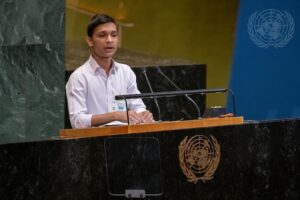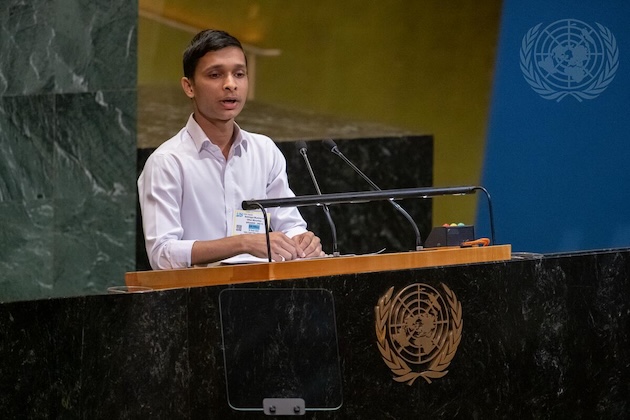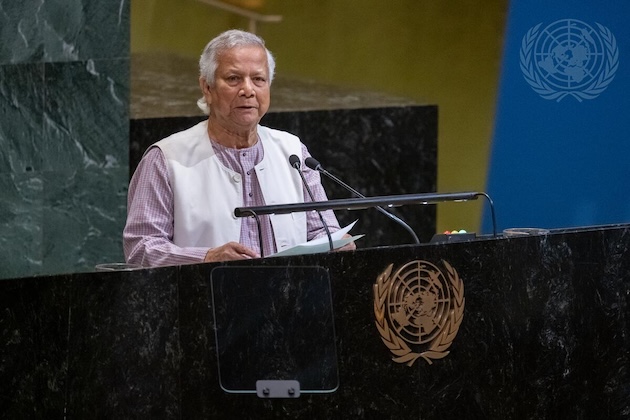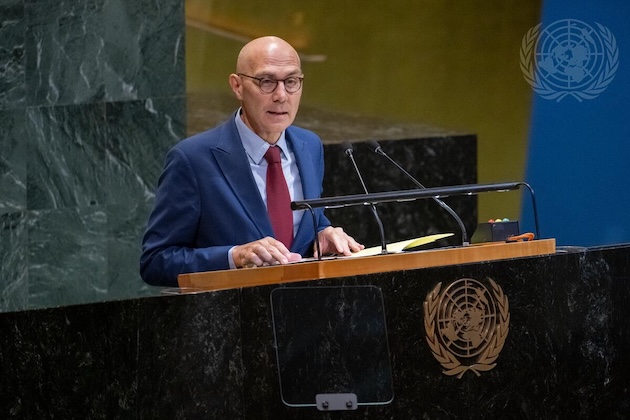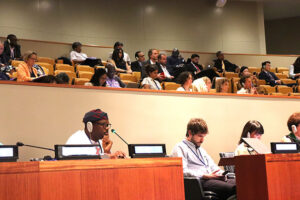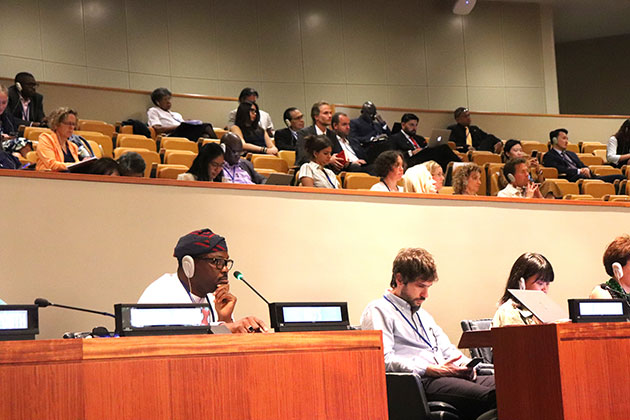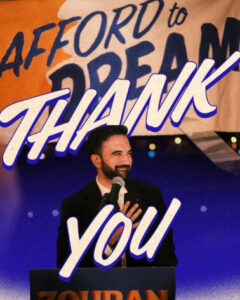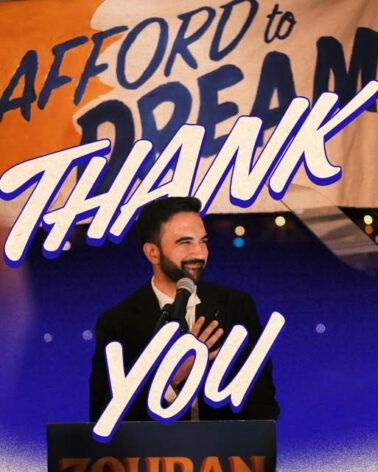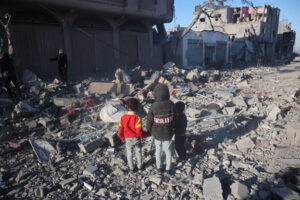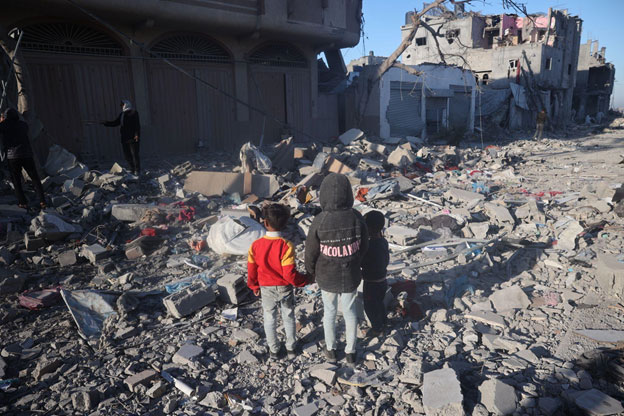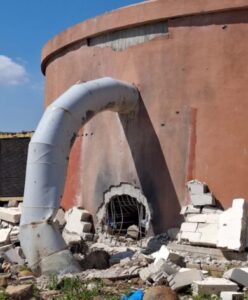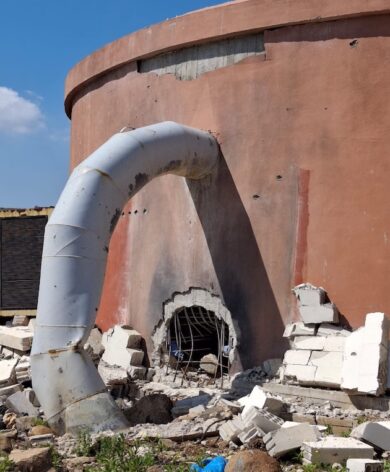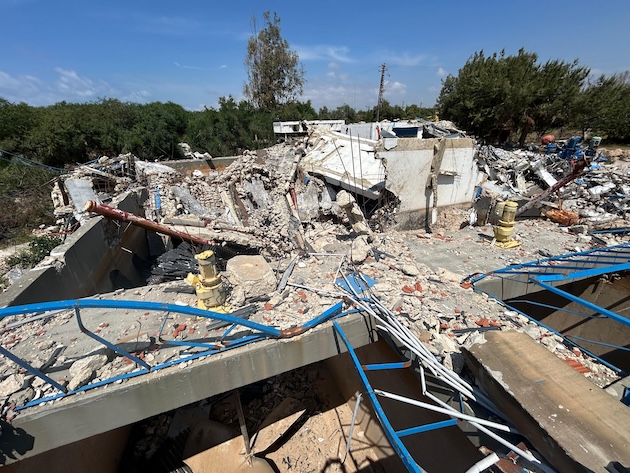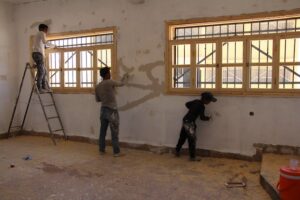
Active Citizens, Aid, Armed Conflicts, Conferences, Development & Aid, Education, Featured, Headlines, Human Rights, Humanitarian Emergencies, Latin America & the Caribbean, Middle East & North Africa, Sustainable Development Goals
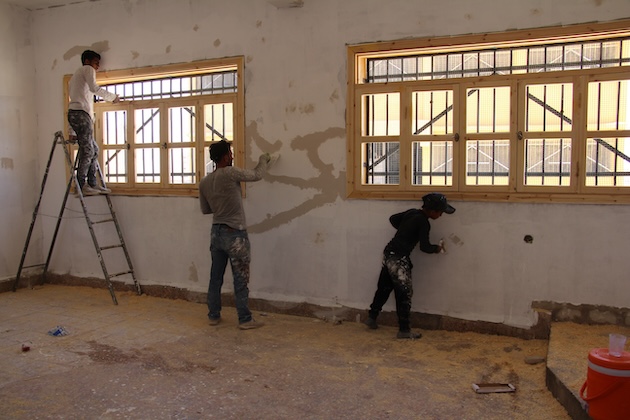
The community gets together to repair a school in the city of Saraqib, located south of Idlib, that was destroyed by bombing during the Assad regime. Credit: Sonia Al Ali/IPS
– The war has deprived thousands of Syrian children of their right to education, especially displaced children in makeshift camps. Amidst difficult economic conditions and the inability of many families to afford educational costs, the future of these children is under threat.
Adel Al-Abbas, a 13-year-old boy from Aleppo, northern Syria, was forced to quit his education after being displaced from his city and moving to a camp on the Syrian-Turkish border. He says, “I was chasing my dream like any other child, but my family’s poverty and the harsh circumstances stood in my way and destroyed all my dreams.”
Adel had hoped to become an engineer, but he left school and gave up on his goal. He replaced books and pens with work tools to help his impoverished family secure life’s necessities. He adds, “We are living in extremely difficult conditions today; we can’t even afford food. So, I have to find a job to survive and help my family, especially after my father was hit by shrapnel in the head, which caused him a permanent disability.”
Adel’s mother is saddened by her son’s situation, saying to IPS, “We need the income my son brings in after my husband got sick and became unable to provide for our family. In any case, work is better than an education that is now useless after he’s been out of school for so long and has fallen behind his peers.”
Reem Al-Diri, an 11-year-old, left school after her family was displaced from rural Damascus to the city of Idlib in northern Syria. Explaining why, she speaks with a clear sense of regret: “I loved school very much and was one of the top students in my class, but my family decided I had to stop my education to help my mom with the housework.”
The young girl confirms that she watches children on their way to school every morning, and she wishes she could go with them to complete her education and become a teacher in the future.
Reem’s mother, Umayya Al-Khalid, justifies her daughter’s absence from school, saying, “After we moved to a camp on the outskirts of Idlib, the schools became far from where we live. We also suffer from a lack of security and the widespread kidnapping of girls. So, I feared for my daughter and preferred for her to stay at home.”
Causes of school dropout
Akram Al-Hussein, a school principal in Idlib, northern Syria, speaks about the school dropout crisis in the country.
“School dropouts are one of the most serious challenges facing society. The absence of education leads to an unknown future for children and for the entire community.”
Al-Hussein emphasizes that relevant authorities and the international community must exert greater efforts to support education and ensure it does not remain a distant dream for children who face poverty and displacement.
He adds, “The reasons and motivations for children dropping out of school vary, ranging from conditions imposed by war—such as killings, displacement, and forced conscription-to child labor and poverty. Other factors include frequent displacement and the child’s inability to settle in one place during the school year, as well as a general lack of parental interest in education and their ignorance of the risks of depriving a child of schooling.”
In this context, the Syria Response Coordinators team, a specialized statistics group in Syria, noted in a statement that the number of out-of-school children in Syria has reached more than 2.5 million, with northwestern Syria alone accounting for over 318,000 out-of-school children, with more than 78,000 of them living in displacement camps. Of this group, 85 percent are engaged in various occupations, including dangerous ones.
In a report dated June 12, 2024, the team identified the key reasons behind the widening school dropout crisis.
A shortage of schools relative to the population density, a shift towards private education, difficult economic conditions, a lack of local government laws to prevent children from entering the labor market, displacement and forced migration, and a marginalized education sector with insufficient support from both local and international humanitarian organizations are seen as the causes.
The team’s report warned that if this trend continues, it will lead to the emergence of an uneducated, illiterate generation. This generation will be consumers rather than producers, and as a result, these uneducated children will become a burden on society.
Initiatives to Restore Destroyed Schools
The destruction of schools in Syria has significantly contributed to the school dropout crisis. Throughout the years of war, schools were not spared from destruction, looting, and vandalism, leaving millions of children without a place to learn or in buildings unfit for education. However, with the downfall of the Assad regime, several initiatives have been launched to restore these schools. This is seen as an urgent and immediate necessity for building a new Syria.
Samah Al-Dioub, a school principal in the northern Syrian city of Maarat al-Nu’man, says, “Syria’s schools suffered extensive damage from both the earthquake and the bombings. We have collected funds from the city’s residents and are now working on rehabilitating the school, but the need is still immense and the costs are very high, especially with residents returning to the city.” She explained that their current focus is on surveying schools and prioritizing which ones need renovation the most.
Engineer Mohammad Hannoun, director of school buildings at the Syrian Ministry of Education, states that approximately 7,400 schools across Syria were either partially or completely destroyed. They have restored 156 schools so far.
Hannoun adds, “We are working to rehabilitate schools in all Syrian regions, aiming to equip at least one school in every village or city to welcome returning students. The Ministry of Education, along with local and international organizations and civil society, are all contributing to these restoration efforts.”
Hannoun points out that the extensive damage to school buildings harms both teachers and students. It leads to a lack of basic educational resources, puts pressure on the few schools that are still functional, and causes a large number of students to drop out, which ultimately impacts the quality of the educational process.
As part of their contingency plans, Hannoun explains that the ministry, in collaboration with partner organizations, intends to activate schools with the available resources to accommodate children returning from camps and from asylum countries. This effort is particularly focused on affected areas that have experienced massive waves of displacement.
The United Nations Children’s Fund (UNICEF) said in 2025, 16.7 million people, including 7.5 million children, are in need of humanitarian support in the country, with 2.45 million children out of school, and 2 million children are at risk of malnutrition.
The phenomenon of school dropouts has become a crisis threatening Syria’s children, who have been forced by circumstances to work to earn a living for their families. Instead of being in a classroom to build their futures, children are struggling to survive in an environment left behind by conflict and displacement.

